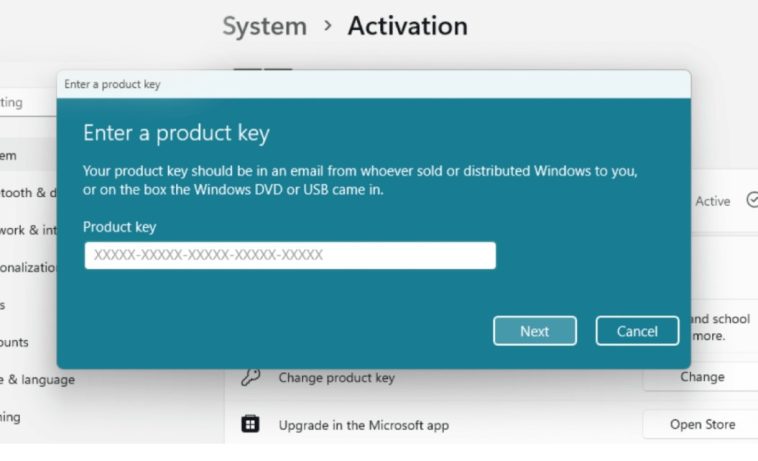Microsoft has delivered a significant blow to illegal Windows activations by disabling the widely used KMS38 method. This move impacts countless users who relied on KMS38 to bypass Windows licensing restrictions, marking a major shift in the tech giant’s approach to software security.
KMS38 Activation Method Officially Disabled
For years, KMS38 has been one of the most popular tools for activating pirated copies of Windows 10 and Windows 11. Developed by the community project Massgrave, KMS38 allowed users to extend Windows activation from the standard 180-day KMS cycle all the way to the year 2038. It achieved this by manipulating the GatherOSstate.exe file, essentially tricking the system into recognizing an offline activation as valid indefinitely.
However, Microsoft has now completely neutralized this method. Starting with updates in January 2024, and continuing with November 2025 updates (KB5068861, KB5067112) and earlier optional patch KB5067036, Microsoft systematically removed the crucial file used by KMS38. This renders the method completely non-functional, forcing users to reconsider their options.
Why KMS38 Was Popular
KMS38 became widely adopted for several reasons:
- Offline Activation: Unlike other methods, KMS38 didn’t require an internet connection.
- Long-Term Validity: Users could bypass the 180-day limit and use Windows as if it were permanently activated.
- Simplicity: It was a hassle-free method, requiring minimal technical knowledge.
The ease and reliability of KMS38 made it the go-to choice for many users attempting to bypass Windows licensing.
Microsoft’s Security Motivation
This move is part of a broader effort by Microsoft to combat piracy and enhance the security of its software ecosystem. By removing vulnerabilities that allowed offline, indefinite activations, Microsoft ensures that:
- Licensed copies are genuinely in use.
- System integrity and security are maintained.
- Piracy incentives are reduced.
Experts suggest that this step could also pave the way for stricter activation enforcement in future updates.
What Massgrave Says
Massgrave, the developer behind KMS38, has confirmed the tool is no longer functional. According to their statement, KMS38’s deactivation is limited to this specific method, meaning other activation workarounds like HWID (Hardware ID) and TSforge are still operational.
Even so, KMS38’s disappearance leaves a significant gap for users seeking offline activation solutions, as it was the most practical and widely used method.
The Technical Details
KMS38 worked by altering the GatherOSstate.exe file, a system component used to check activation status. By manipulating this file, the tool extended Windows activation far beyond the intended 180 days.
- January 2024: GatherOSstate.exe removal begins with Windows build updates.
- October 2025: Optional updates further restrict its functionality.
- November 2025: KB5068861 and KB5067112 updates finalize the removal, fully blocking KMS38.
With these steps, Microsoft has eliminated a key loophole, making it impossible for users to rely on KMS38 for permanent activation.
What Are the Alternatives?
While KMS38 is no longer functional, other activation workarounds still exist, including:
- HWID (Hardware ID Activation): Binds Windows activation to a specific device.
- TSforge: Another offline activation tool that is currently unaffected.
However, experts warn that these alternatives may also be targeted in future updates. Users relying on them could face similar restrictions if Microsoft continues its crackdown.
Implications for Windows Users
For legitimate Windows users, these changes reinforce the importance of using licensed software. Pirated software not only violates copyright laws but can also:
- Expose devices to malware and ransomware.
- Limit access to security updates.
- Create compatibility issues with future Windows releases.
Microsoft’s action is likely to encourage users to transition to genuine licenses, reducing the prevalence of pirated copies in both consumer and enterprise environments.
The Bigger Picture: Microsoft vs. Piracy
This move is part of a long-term strategy by Microsoft to combat piracy. By closing loopholes like KMS38, the company demonstrates its commitment to:
- Protecting intellectual property.
- Enhancing software security for all users.
- Promoting fair licensing practices across the industry.
Although piracy remains an ongoing challenge, the removal of KMS38 represents a significant step in the right direction.
Editor’s Note
This article is intended to inform readers about Microsoft’s latest security measures. We do not endorse or encourage the use of pirated software. Using genuine Windows licenses ensures better security, updates, and overall system stability.
Conclusion
Microsoft’s deactivation of KMS38 marks a pivotal moment in software licensing enforcement. Users who previously relied on KMS38 must now explore alternative activation methods or transition to legitimate licenses. With continued vigilance from Microsoft, the era of easy, offline Windows activation may be coming to an end.
What do you think about Microsoft’s move to block KMS38? Share your thoughts in the comments and follow our news blog for more updates on software security and Windows licensing changes.

